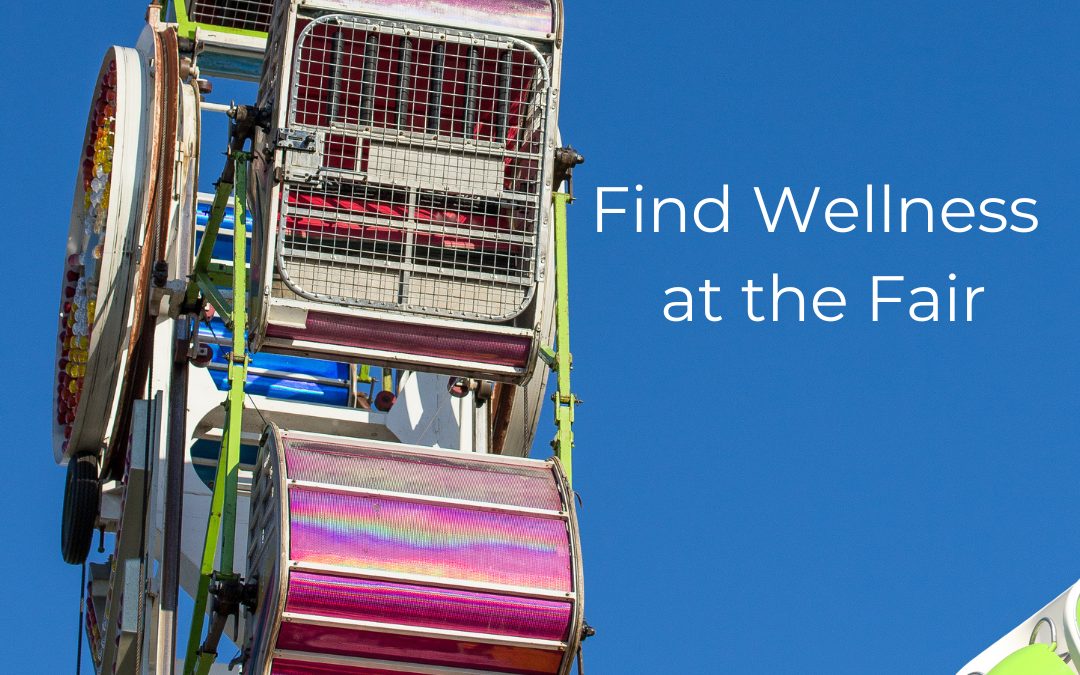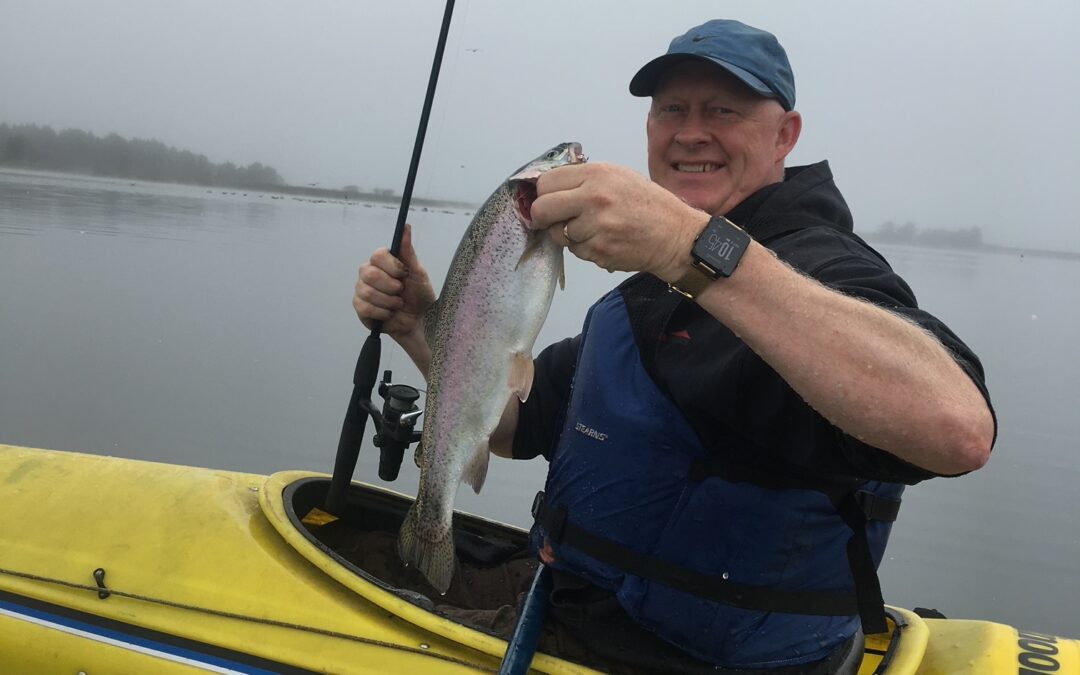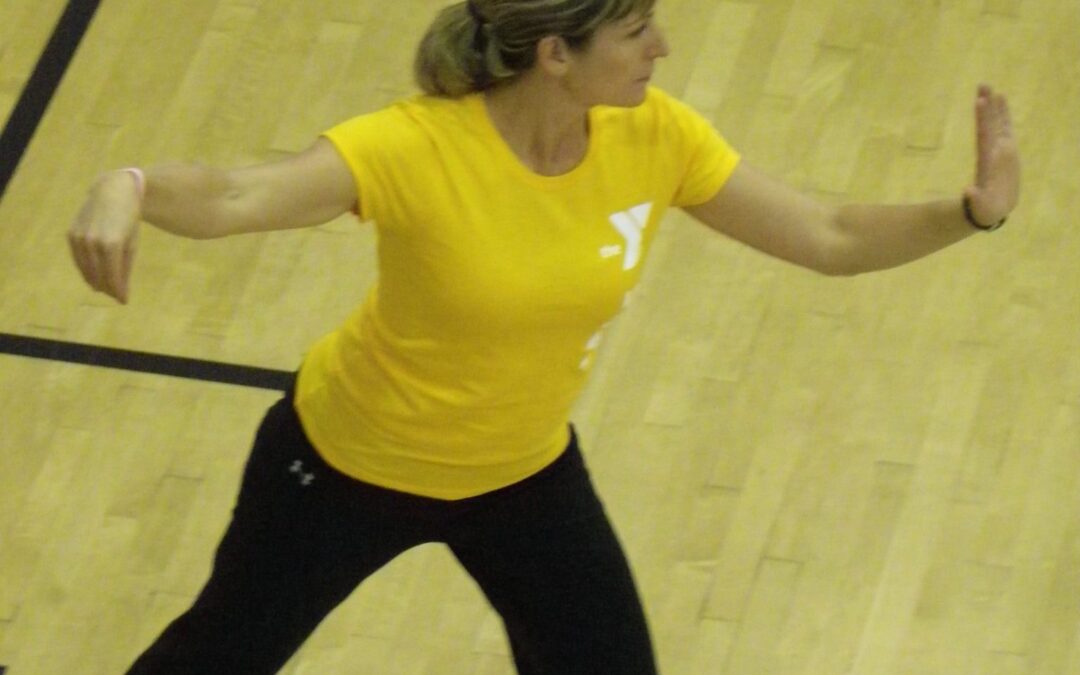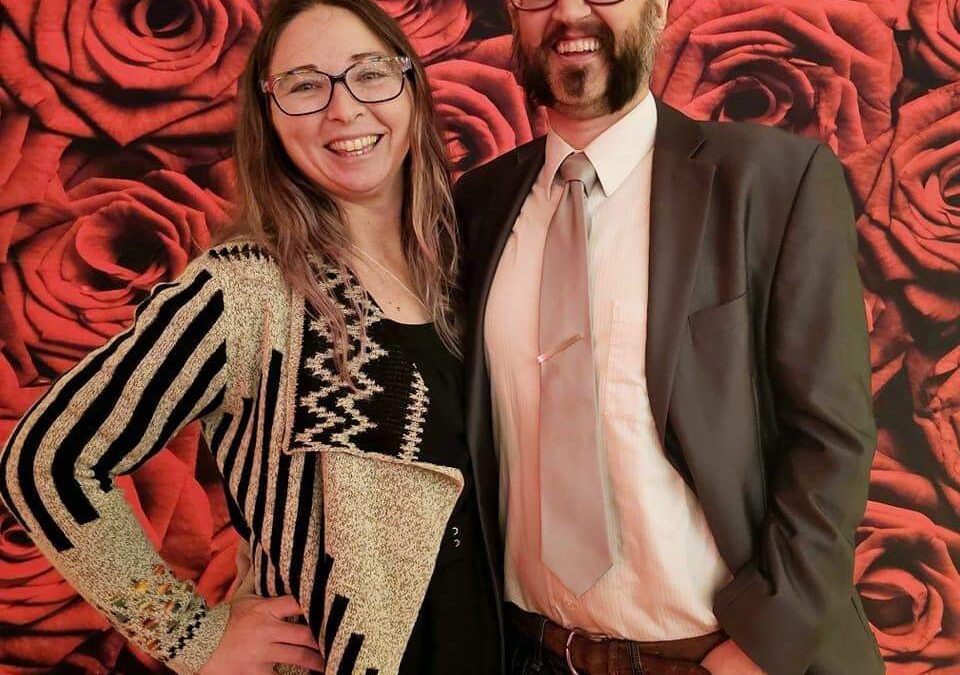
by Michelle | Aug 10, 2024 | Being Well, Featured, Move Well, Uncategorized
August is a busy month! There are several free wellness activities coming up, some of which you can learn more about at the Tillamook County Fair.
“Treasure Your Wellness” Treasure Map: This interactive map can be found at the Tillamook Library bookmobile located near the Master Gardener’s garden by the east entrance of the fairgrounds. This fun, free, and family-friendly adventure runs From August 5th to September 30th . Explore wellness destinations like Activity Island, Be Well-Nourished Bay, Community Cove and the Isle of Inner Peace. Each location includes activity challenges —volunteer, cook a healthy meal, visit a rec center, start a savings account and more. Complete at least one activity on each island and you could win incredible wellness-themed prizes, like cornhole, pickleball, and disc golf sets or the grand prize of an ATX bike valued over $500! In addition to being available at the fair, maps can be found at local library branches, Kiawanda Community Center, Tillamook YMCA, North County Recreation District and Food Roots or on- line at This Way to Well-Being | Tillamook County Wellness.
Health Literacy Campaign: Materials from our recent health literacy campaign can also be found at the Tillamook Library booth at the fair. Bookmarks and other materials highlighting important health information like finding a primary care provider, getting vital health screenings and knowing when to visit your doctor, urgent care or emergency department, are just a few topics covered. You can also find more information here. Community Health Survey: When you visit the Library Bookmobile at the Fair, be sure to take our Community Health Needs Survey. Tell us what you and your family most need to live your best life and your areas of greatest concern impacting your health and well-being. You can also take the survey here.
Financial Wellness: Visit the Habitat for Humanity booth – located in the main pavilion building, under the stairs near the fair office – for community conversations on what financial health means to you. While you are there, learn more about first-time home buying and other ways you can work toward your financial goals. While you are at the Habitat for Humanity booth be sure to sign up for:
- FUNancial Wellness Event – Come to the Tillamook YMCA, Monday, August 19th, 2024, 5:00- 6:30 PM for food, fun and financial learning opportunities for kids 3rd -6th grade. This FREE event provides kids and families an opportunity to learn about saving, spending, growing and protecting money. Kids will take home more than just knowledge with free giveaways and prizes. Learn more and register for the event here.
- Sign Up to become a “FinLit” Financial Literacy Volunteer – This program relies on volunteers to deliver free curriculum from Financial Beginnings. Classes are held in English & Spanish at multiple community locations, including Tillamook Bay Community College, Helping Hands, and Trask High School.
Volunteers can commit to as many or as few classes as works for their schedule. To learn more or to register to become a volunteer, visit Financial Beginnings (finbeg.org). If we don’t see you at the fair, here are other ways you can get information about these and future wellness events.
AUTHOR: Michelle Jenck, Adventist Health Tillamook Director of Community Well-Being

by Guest | Jul 12, 2024 | Being Well, Featured, Move Well, Work Well
Occupational Therapy is an often misunderstood or unheard of rehabilitative therapy. It is not just about our jobs and work we do. The easiest way to say it is therapy for anything that occupies your time. If there is anything you can’t do that you want to do, then come to us and we will help you get back to doing it. Sleeping, cooking, hobbies, socializing, travel, etc. are all things that occupy your time. There are many ways we can help by analyzing the activity and then finding other ways to do it, using exercises and strengthening to make it more possible, or using devices or equipment to make it possible. We can come to your house and do an evaluation if home modifications or larger equipment is needed, or you can come to see us in outpatient therapy to work on improving function in your life.
Occupational Therapist use more of a wholistic approach to therapy. We don’t just look at the physical, but also the psychological and sociological aspects of a person to help them. What do they enjoy, what is important to them and what they think and believe are important things to be considered. When we can’t do what we enjoy due to pain, or loss of ability this affects the whole person. We can help to deal with chronic pain management as well as behavioral management to work with the person as a whole. We are also Qualified Mental Health Practitioners and can help with depression, anxiety, or other diagnoses associated with these issues.
The best way to get a referral is through your primary care provider (PCP). Employees can self-refer, also. We’re working to increase provider awareness about our services, but your always welcome to ask questions. If you have any questions or need advice on what to say to your PCP, feel free to contact Timothy Patching at patchitr@ah.org. We’re here to help you every step of the way!

by Guest | Apr 11, 2024 | Being Well, Featured, Move Well, Uncategorized
We love our pets. We also love our beautiful coastal gardens. Sadly, sometimes, the most stunning things in our gardens can be toxic to our beloved pets. So, how do we protect our pets and still maintain a gorgeous landscape. Depending on your pets’ needs and habits, we can eliminate many of the toxic plants they may come in contact with. Here are a few common plants to avoid.
First to consider is Narcissus (Daffodils). These pretty seasonal flowers brighten up an early spring garden. Many see them as a sign that wet stormy coastal weather is ending and warmer, drier days are upon us. However, even in small amounts, the flowers can cause symptoms of diarrhea and vomiting.
Many of us love rhubarb pie and the rhubarb plant grows well in coastal climates. The stalks produce malic acid which is beneficial for people with acne, fibromyalgia, dry skin, and fatigue. The leaves are a different story. Even in small amounts the leaves can be lethal. They can cause gastrointestinal distress, breathing problems, and internal bleeding.
The flowers from Digitalis (foxglove) contain cardiac glycosides used in modern medicine. Accidental ingestion can be fatal. Dizziness vomiting, irregular heartbeat, delirium, hallucinations, and death can occur if accidentally ingested.
Hemlock is another plant highly toxic to pets. The entire plant, especially the roots, are poisonous. They can be found growing wild along stream banks and ditches. Symptoms vary after ingestion, ranging from nausea, vomiting, and salivation to convulsions, coma and ultimately death.
Finally, Hedra (English Ivy) is a common culprit of poisoning. These evergreen woody vines are extremely invasive and can easily climb up trees, fences, and buildings. The berries of these plants look like blueberries but that is where the similarity ends. If eaten, they can cause burning in the mouth and throat and gastrointestinal distress.
Before discussing pet-safe plants there is one additional plant of concern. Locally, Creeping Buttercups grow prolifically. They are opportunistic and will grow anyway they can take root. Gone unaddressed they will completely take over a garden. It is important to take note of these especially because often they grow in lawns. Many domestic animals eat grass to aid in digestion. The fresh sap of this plant is highly irritating to skin and mucous membranes. If ingested it can cause gastrointestinal irritation, colic, diarrhea, nephritis and in severe cases, paralysis of the central nervous system. The best way to prevent the spread of these is to dig and pull them up by the roots before they go to seed.
Even though there are a number of plants of concern, not to worry, there are many plants and flowers that add beauty to a garden and maintain a safe environment for your pet. Consider planting a pet friendly lawn. You can purchase seeds from a variety of places that sell lawn seed advertised as pet safe and pet friendly. Careful research will help you decide which seed is right for your pet and the area where you live.
Also, there are many herbs that your pet might enjoy snacking on while they improve your landscape. Try planting herbs like sage, rosemary, thyme, dill, fennel or basil. They smell terrific, are a nice addition to dips and sauces, and your pets will also appreciate them.
Many annuals are colorful and safe for your pets. Among them are petunias, fuchsias, sunflowers, camellia, snapdragons, and nasturtiums. All these plants come in a variety of shades, shapes and colors. Because of our mild coastal temperatures, they often winter over, and we can enjoy them over again the next year.
There are also a variety of perennials that are equally gorgeous and pet friendly. They include dahlias, hollyhock, and black eyes susans. These will add the brilliance that makes every garden pop with color year after year.
There is much to consider when designing a pet friendly landscape. It is best to do thorough research before planting. There are a wide variety of choices to meet your and your pet’s needs. If you need help determining what is safe and unsafe for your garden, please feel free to contact your local OSU extension office at 503-842-3433 or contact us through our web site at https://extension.oregonstate.edu/tillamook
You can also contact the Tillamook County Master Gardeners Association for help. Reach them through the OSU extension office, their website at https://tillamookmastergardeners.com/ or find them on Facebook. There are many resources available to assist you in creating a beautiful and safe garden for you and your pet.
Written by: Alice St. Clare, OSU Master Gardener

by Guest | Apr 4, 2024 | Being Well, Featured, Move Well
In our busy lives, there is much to pull our focus and distract our minds as we move through our day. The constant buzz of the phone in our pocket, ever-present screens, and ambient noise from a world in constant motion contribute to all the distractions. All of these disturbances lead to inattention and are not ideal for our bodies or minds. This is where the concept of mindful movement can come into play. Using mindful movement helps to increase awareness of your body, which, in turn, will help increase the enjoyment of activities, improve mental focus, and reduce stress. This article will help you explore the benefits of mindful movement and simple methods of incorporating mindfulness into your daily life.
What is Mindful Movement?
Mindful movement is creating an awareness of your body by bringing your full attention to the present moment and the current activity you are engaging in. Mindful movement is done without the intent of judging yourself. Instead, you are acknowledging how the body feels and responds to movement. The difference between exercising and practicing mindful movement is intent. You can exercise by merely going through the motions of the movements with the hope of seeing physical benefits. However, with mindful movements, you notice things like your breathing, how the floor feels under your feet, and the stretch in your muscles as you move them.
Mindfulness originally started as a form of meditation. It became more mainstream as yoga gained popularity, and mindfulness was frequently added to the end of a yoga practice. Practicing mindful movement with exercise then expanded to other forms of exercise, including Pilates and stretching. However, mindful movement is not limited to just formal exercise. It can be incorporated into the things you mindlessly do every day, such as walking the dog or sitting at your desk while working.
The Benefits of Mindful Movement
As the practice of mindful movement grew, so did the research showing the benefits of moving mindfully.
- It is generally accepted that exercise reduces stress and improves emotional well-being. The practice of mindful movement is no exception. Mindful-based interventions show a reduction in anxiety, depression, and stress equivalent to psychological interventions.
- Reducing stressors has the additional benefit of improving immunity. Stress is known to suppress immunity by triggering an inflammatory response. By utilizing methods of reducing stress, you can experience boosted immunity by interrupting the inflammatory response pathways in your body.
- Routinely practicing mindful movement will help improve sleep. The average adult needs 7-8 hours of sleep a night. Mindful movement can help achieve this amount of sleep and improve the quality of the sleep you get.
- Improved focus, concentration, and control of ADHD symptoms have been observed in adults and children who routinely practice mindful exercise, such as tai chi, yoga, and dance.
- Proprioception is the body’s awareness of its place in the space around it and how it moves through space. Mindful movements will improve proprioception. This occurs by using the brain and body connection to retrain the body with new motor skills. These new skills help reduce falls by improving balance.
Examples of Mindful Movement
Mindful movement is for everyone, not just athletes and those who exercise regularly. Mindful movement can be incorporated into your daily activities with both structured and unstructured activities.
Structured:
- Yoga
- Pilates
- Strength training
- Stretching
- Tai Chi
- Qigong
Unstructured:
- Freestyle dance, turn the radio on and let loose
- Singing in the car
- Playing games with children
- Gardening
- Walking your dog
- Washing dishes
- Driving
Begin Moving Mindfully
You can start your practice of moving mindfully at any time and easily incorporate it into your daily routine. There is no need for athletic equipment. No level of activity is too small to add mindfulness to it. You can quickly begin with a walk, seated yoga, stretching, or by adding mindfulness to your current exercise routines. Here are some tips to get you going.
- Add to everyday activities: Focus on basic activities like walking, breathing, gardening, or gentle stretching.
- Minimize distractions: Turn off your phone for the duration of your mindfulness practice. Find a quiet space away from others where you can really focus your mind without interruption.
- Focus on breathing: Use your breath to regulate your mind. Slow, deep breaths help to slow your mind and keep you in the present moment.
- Engage your senses: Pay attention to the sounds around you. Can you smell wet rain on the ground or the fir tree in your yard? Reach out and touch trees, rocks, and flowers as you walk.
- Pay attention to your body: Acknowledge any aches or pains, but do not dwell on them. Notice how your hair moves as the wind blows through it, how the ground feels under your feet, or the movement of your muscles with the activity. If your mind wanders, gently bring your attention back to your body.
Starting small with activities you already do in your daily life makes it easy to add mindful movement gradually. Begin with activities you enjoy or that fit into your lifestyle. Taking the time to pay attention and focus on your movements allows you to gain a new appreciation for the amazing piece of machinery that your body is. By focusing on your body, you are doing more than simply going through the motions of an activity. So remember to be patient and kind to yourself by focusing on progression, not perfection.
Resources:
https://www.sciencedirect.com/science/article/abs/pii/S0272735817303847?via%3Dihub
https://davidvago.bwh.harvard.edu/why-mindfulness-can-help-the-immune-system/
https://pubmed.ncbi.nlm.nih.gov/26802824/
https://www.ncbi.nlm.nih.gov/pmc/articles/PMC4484342/
https://www.ncbi.nlm.nih.gov/pmc/articles/PMC4309156/
Written by Leanna Coy

by Guest | Mar 2, 2024 | Being Well, Featured, Move Well, Uncategorized
As spring approaches, a sense of excitement fills the air among local gardeners as they prepare to kickstart their seeds and condition their gardens for the upcoming abundance of fruit and vegetable starts. It’s also a great time to involve children in the excitement of planning and starting a gardening!
Being surrounded by the temptations of technology, encouraging kids to get outside and engage with nature can be a challenge. Gardening is a valuable tool to captivate their interest, offering a hands-on approach to exploring their outdoor world.
As kids dig into the soil, sow the seeds, and tend to the plants, they develop a sense of ownership and responsibility. The act of caring for the seeds instills the concept of delayed gratification, offering a reward that comes from consistently caring for something over time. In our fast-paced “microwave society,” it can be an advantage for our children to understand that things require time and patience to grow.
Let’s explore some entertaining and budget-friendly ways to introduce kids to the joy of gardening!
• Craft environmentally-friendly seed pots using recycled newspapers. This engaging activity not only prepares for planting but also serves as an excellent rainy day project.
• Utilize everyday items like recycled yogurt or cottage cheese containers, and even milk jugs that are cut in half. Remember to poke a few small holes in the bottom for proper drainage.
• Use eco-friendly items like eggshells, egg cartons, or orange peels as planting containers. These can be directly planted in the garden, where they will biodegrade.
• If space is limited, sow seeds directly into a large pot or bucket, creating a compact and manageable container garden. This is ideal for patios or areas with minimal space.
• Capture your child’s interest by aligning the garden with their passions. Consider a pizza garden with basil, oregano, tomatoes, and onions. Or create a fairy garden, allowing them to plant flowers or succulents and add them to the container with fun trinkets.
• Foster excitement by planting something that grows taller than your child. Dill, with its tall and frilly leaves, or classic sunflowers, make for excellent choices.
• Opt for fast-growing options like radishes, lettuce, and some bean varieties, providing a sense of accomplishment as your little ones get to harvest their crops in no time.
By adding in creative and budget-friendly ideas, you’re helping cultivate a love for gardening and sparking the imagination of the young green thumbs in your life!
For more information on starting and growing a garden, visit: https://foodhero.org/gardening
For more local health and wellness information, visit www.tillamookcountywellness.org or follow Tillamook County Wellness on Facebook and Instagram.

by Guest | Feb 28, 2024 | Being Well, Featured, Move Well
Greetings Everyone! My name is Stephen Mintie and I live in Tillamook with my wonderful wife. I’ve gotten to know a lot of people in the area in the short time I’ve been here which is partially due to my endeavors in amateur videography. This allows me to be a visual storyteller in how I share my life. People regularly get to see a rich personal life I’m very grateful for that includes paragliding, hiking, community involvement, dining with my wife, and various adventures. What they don’t know is that I’ve had some times in my life of deep despair that has translated to some heavy anxiety and depression that still impacts me to this day and it has affected my physical health as well.
We all face different circumstances and traumas. We all process information and are motivated differently. Our tolerances vary as well. With that said, here are some things that have helped me pull out of my moments of weakness and pain though it is still very much a work in progress.
Light exercise goes a long way! A job of a physical nature or hobbies can help. There was a time I didn’t have either. I elected to do some sit ups, push ups, and a light jog a few times a week. After about a month and a half, I was improving. The biggest benefit was that physical activity led to better mental strength. Exercise does not need to be about vanity, it only takes a little work consistently for your mind and body to reap the rewards. When the chips are down, you need all the cards you can get in your deck.
What you put into your body matters. For a long time I was eating a frozen pizza for dinner late at night while washing it down with copious amounts of beer. This absolutely set me back pretty hard. I started developing what felt like an allergy to what I thought was gluten which has since subsided as I’ve changed this habit. The way I went about this was I started eating healthy foods such as greens and vegetables during the day. I felt it was easier to do during my working hours when I wasn’t chasing food for comfort. In the evening, I learned how to take healthy ingredients, but make it into something that tasted satisfying. I was able to feed the habit, and the habit didn’t know it was good for me. – Alcohol doesn’t serve anybody when things are hard. It’s a depressant and after a drink or two, it’s essentially poison. Do I still drink? Yes. Would I benefit from abstaining altogether? Absolutely. I wasn’t going to stop though, but I was thoughtful about its impacts. I stopped buying hard liquor in stores and stuck with low ABV beer. These days I have a pretty set limit of how much I’ll drink, but I wouldn’t consider it to be within healthy ranges. Remember, if your mind is hurting, alcohol is your enemy. A few hours of feeling good is only borrowing a few hours of happiness that has to be repaid back times 4.
Focus on growth rather than goals. You can fail while growing and even if you hit goals, you still will want to continue growing. Growth means that you don’t stop trying. Growth also means pursuing things that fill your personal cup and provide you with more mental stamina and relief. This varies wildly from person to person. Comparing yourself to others hinders growth.
In a world filled with people who are healthy and sick, rich and poor, only your story matters because it’s your health and mental well being on the line. We should absolutely care and empathize with others, but you can help people a lot more if you are happy and healthy. Growth also doesn’t have to be solely related towards eating right and exercising. The happiest people out there are also the most gracious. Grow in gratitude, be kind, and help others. Life is full of pain and disappointment for many. Think of ways to put a smile on somebody’s face. If you feel rudderless without direction, sometimes all you can do is your best. If you can’t find the light, be the light!
Lastly and while this applies to everyone, I’m really speaking to the men out there. Don’t be afraid to say something if you’re hurting. Some of my best pals and I talk about it all the time. It makes us human and relatable. I’ve made more friends in my life being open, honest, oftentimes self deprecating rather than bragging or making it seem like everything is in order. At the end of the day you are not alone. Life is not meant to be lived in quiet desperation and nothing changes if nothing changes. Regardless of your self esteem, say to yourself “I want to feel good, I want to be ok, and I would like to be happy too.” After that, start thinking about little things you are capable of doing every day consistently that will help you head in that direction. The time of my life where I started doing these things was a time I did not have hope whatsoever. I couldn’t see the way out, but I knew if I didn’t try the basics, I was going to sink. While I am a very lucky man now, I often think, “wow, there were so many times I just wanted to give up, and if I had, I would have had none of this.”
Don’t ever give up and remember, there’s a trick to eating an elephant, you have to take small bites.






